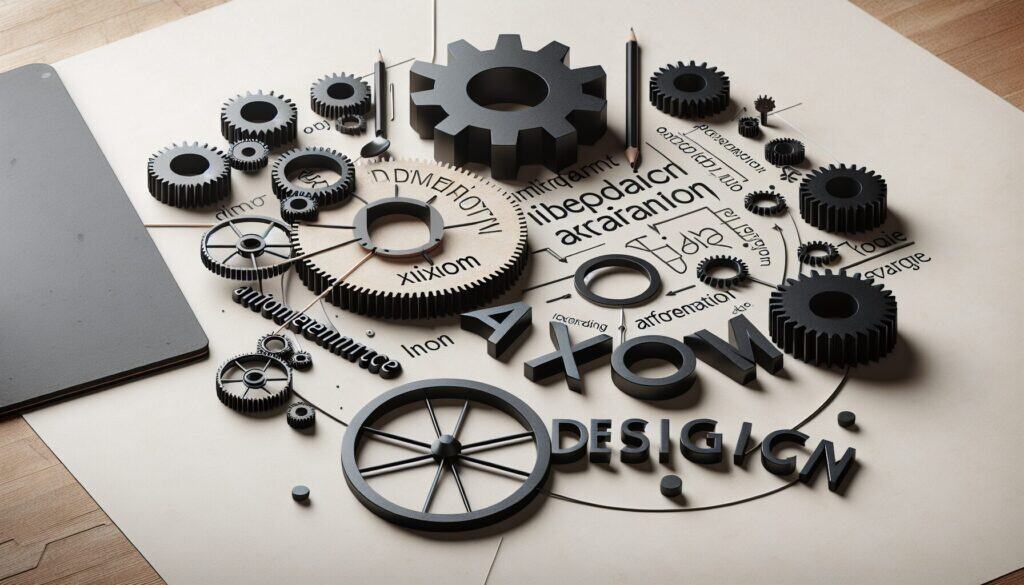Eine systematische Entwurfsmethodik, die auf zwei grundlegenden Axiomen beruht: dem Unabhängigkeitsaxiom (Aufrechterhaltung der Unabhängigkeit der funktionalen Anforderungen) und dem Informationsaxiom (Minimierung von Informationsgehalt/Komplexität).
- Methodologien: Maschinenbau, Qualität
Axiomatisches Design

Axiomatisches Design
- Design für additive Fertigung (DfAM), Design für die Fertigung (DfM), Entwurf für Six Sigma (DfSS), Optimierung des Designs, Gestaltungsprinzipien, Entwurfsprozess, Schlanke Fertigung, Einsatz von Qualitätsfunktionen (QFD), Systemmodellierungssprache (SysML)
Zielsetzung:
Wie es verwendet wird:
- Designer zerlegen einen Entwurf in funktionale Anforderungen (FRs), Entwurfsparameter (DPs) und Prozessvariablen (PVs) mit dem Ziel, einen Entwurf zu erstellen, bei dem jede FR durch einen einzigen DP angepasst werden kann, ohne andere FRs zu beeinträchtigen, und bei dem der Entwurf so einfach wie möglich ist.
Vorteile
- Bietet einen strukturierten und logischen Ansatz für den Entwurf; zielt auf robuste und weniger komplexe Entwürfe ab; hilft, Entwurfskonflikte frühzeitig zu erkennen und zu lösen.
Nachteile
- Kann konzeptionell anspruchsvoll sein, um korrekt angewendet zu werden; kann zu übermäßig vereinfachten Entwürfen führen, wenn der Informationsgehalt zu aggressiv minimiert wird, ohne andere Faktoren zu berücksichtigen; erfordert ein tiefes Verständnis des zu entwerfenden Systems.
Kategorien:
- Maschinenbau, Produktdesign
Am besten geeignet für:
- Erstellung robuster und effizienter Entwürfe, indem sichergestellt wird, dass die funktionalen Anforderungen unabhängig sind und der Informationsgehalt minimiert wird.
Axiomatic Design methodology is widely applied in various fields including automotive, aerospace, consumer electronics, and Medizinprodukt design, where maintaining high standards of performance and reliability is crucial. Engineers and product designers utilize this framework during the conceptual and detailed design phases of development projects, ensuring that each functional requirement aligns distinctly with a design parameter, which aids in minimizing unnecessary dependencies and potential conflicts. For instance, in the automotive industry, this approach can be used to design safety features where each requirement, such as crashworthiness or airbag deployment, is addressed without compromising other components of the vehicle system. Participants in this process often include cross-functional teams consisting of design engineers, manufacturing engineers, quality assurance experts, and customer representatives who contribute to defining the functional requirements based on user needs and regulatory standards. The structured nature of Axiomatic Design allows teams to systematically explore alternatives, facilitating a clear decision-making process that enhances communication and collaboration. The methodology also emphasizes the importance of simplicity in design, as less complexity not only reduces costs but also streamlines manufacturing processes and enhances user experience, leading to higher customer satisfaction. The iterative aspect of evaluating and refining design parameters against functional requirements encourages continuous improvement, making it a valuable tool for organizations looking to innovate while maintaining efficiency and robustness in their product offerings.
Die wichtigsten Schritte dieser Methodik
- Identify functional requirements (FRs) based on customer needs and market demands.
- Decompose each FR into design parameters (DPs) that will achieve the required functionality.
- Establish relationships between FRs and DPs to ensure each FR is satisfied independently by a unique DP.
- Assess the information content of the design to minimize complexity and improve robustness.
- Iteratively refine the design through simulations and prototyping to validate relationships and effectiveness.
- Optimize design parameters and confirm that they meet performance criteria while maintaining independence of FRs.
- Document the design process and outcomes for future reference and improvements.
Profi-Tipps
- Leverage simulation tools to predict design behavior under varying parameters, facilitating early identification of potential conflicts.
- Apply robust design techniques to optimize DPs for resilience against variations in manufacturing and operational conditions.
- Document the rationale behind FRs and DPs decisions thoroughly to maintain clarity and facilitate future redesign iterations.
Verschiedene Methoden lesen und vergleichen, Wir empfehlen die
> Umfassendes Methoden-Repository <
zusammen mit den über 400 anderen Methoden.
Ihre Kommentare zu dieser Methodik oder zusätzliche Informationen sind willkommen auf der Kommentarbereich unten ↓ , sowie alle ingenieursbezogenen Ideen oder Links.
Historischer Kontext
1949
1950
1950
1960
1960
1960
1960
1940
1950
1950
1958
1960
1960
1960
1960
(wenn das Datum nicht bekannt oder nicht relevant ist, z. B. "Strömungsmechanik", wird eine gerundete Schätzung des bemerkenswerten Erscheinens angegeben)















Verwandte Artikel
Master Production Schedule (MPS)
Massenanpassung
Marketing-Trichter
Marketing-Audit
MAPO-Index (Bewegung und Unterstützung von Krankenhauspatienten)
Fertigungsressourcenplanung (MRP II)